After several pressure tests of my biofuel system, I’ve determined that the weak link in system must be my heat exchanger. I have two heat exchangers (the FPHE on my frame rail, but also a small HE connected to my biofuel heated filter head. These heat exchangers take the warmth from the coolant system, transfer some thermal energy to the fuel supply, so that when it gets to the filter, it’s not a big, cold, gooey clump of Crisco. One of these parts is causing a bottleneck with my biofuel supply, and it’s forcing my fuel pressure to be 2, 1, or even zero psi at full throttle on the highway.
This is really hard to determine, because after changing out two filters, checking the pressure at the fuel pickup, and replacing the fuel hose from there to the filter, I really didn’t have any other place where pressure could be constricted.
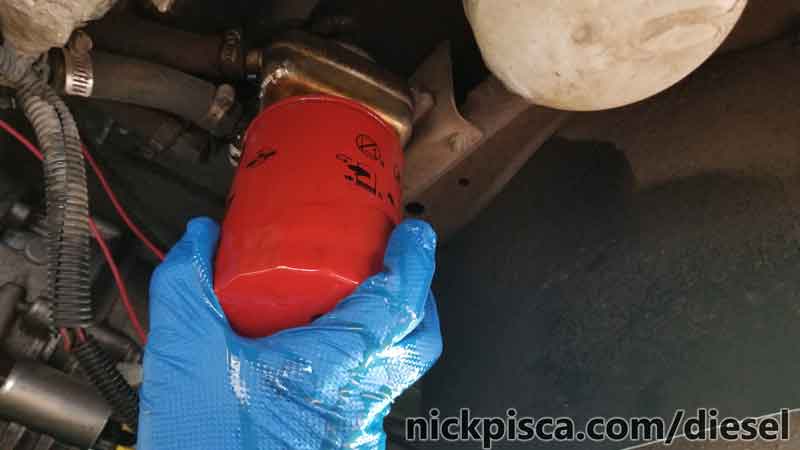
I pulled the filter, turned on the e-pump, and tried to see if the fuel flow would be greater or lesser out of the HE, however, these exchangers are mated up to the filter head with an o-ring gasket. Without the filter threads pushing up against the mating surface and compressing that gasket, it’s impossible to know if flow is restricted.

As you can see in the image below, the heat exchanger droops a bit down the threaded rod. If you allow fuel from the tank to be pumped to the heat exchanger, it’ll just flow out the top and make a huge messa round the exterior.
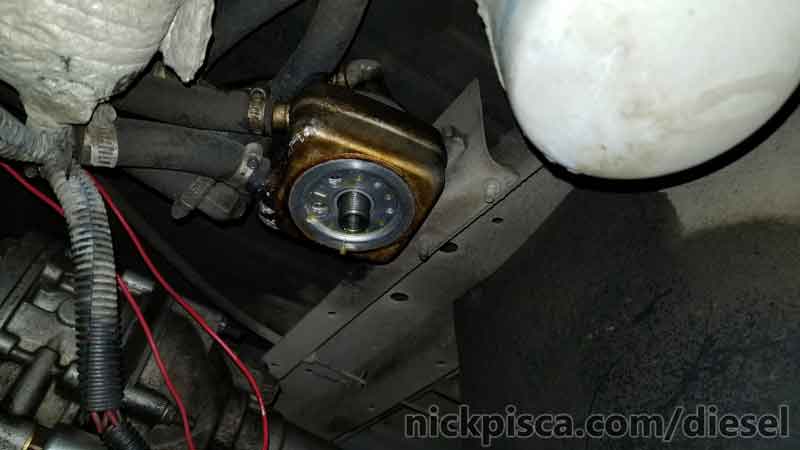
Changing the HE now is just a gamble. It might not even make a difference, but at this point I have nothing to lose.

You can see where the fuel flows through the two holes (in the center rod and the outlet port eccentrically located within the filter gasket ring.

Once you disconnect the coolant hoses, the heat exchanger simply slides off the threaded rod. It’s only held in place by the threads of the filter.
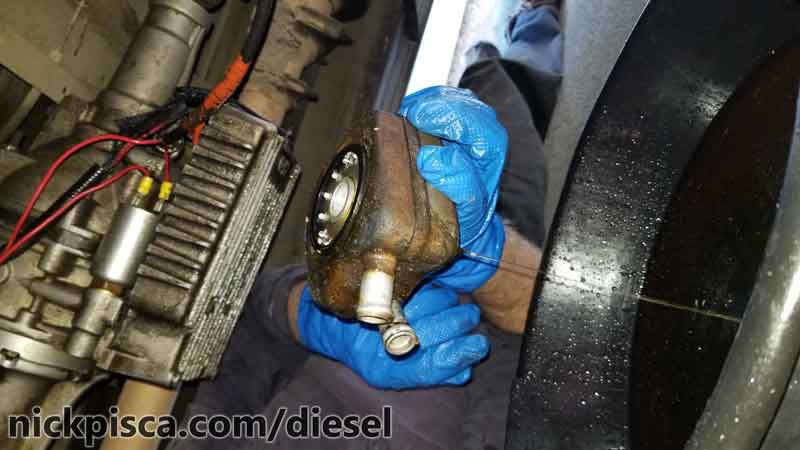
Here is the empty filter head and disconnected heater hoses. Pretty simple system. It looks really clean on the inside (a good sign for a fuel system), but I still think that heat exchanger is the culprit to my pressure problems.
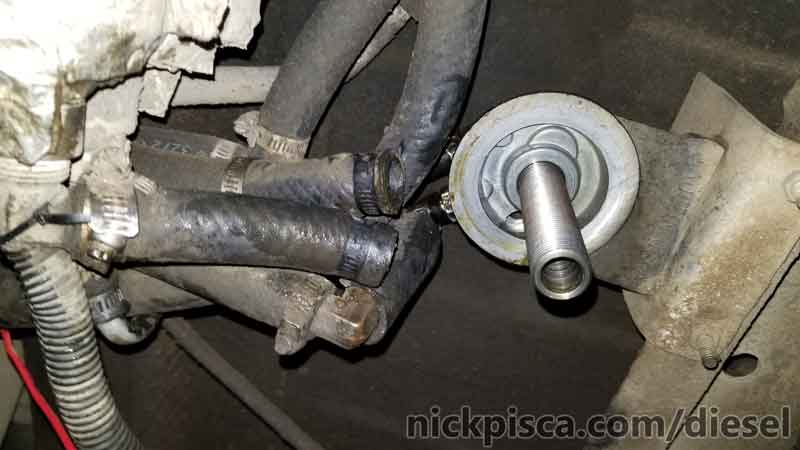
I get/got this biofuel heated filter head from a good eBay (tmvtaylor) and he’s got a decent supply of WVO parts. I’ve had this filter head on my van since 2012, so almost a decade is a decent run. I don’t fault the seller for this part failure, it was just a fluke accident, assuming this is the problem.
I found a replacement heat exchanger that fits perfectly and costs just $20. Interestingly, it is the exact same heat exchanger (oil cooler) that my 1998 VW Jetta uses for crankcase oil.
“New Oil Cooler VW Volkswagen Beetle Jetta Passat Audi A4 Quattro Golf 068117021B” on Ebay.
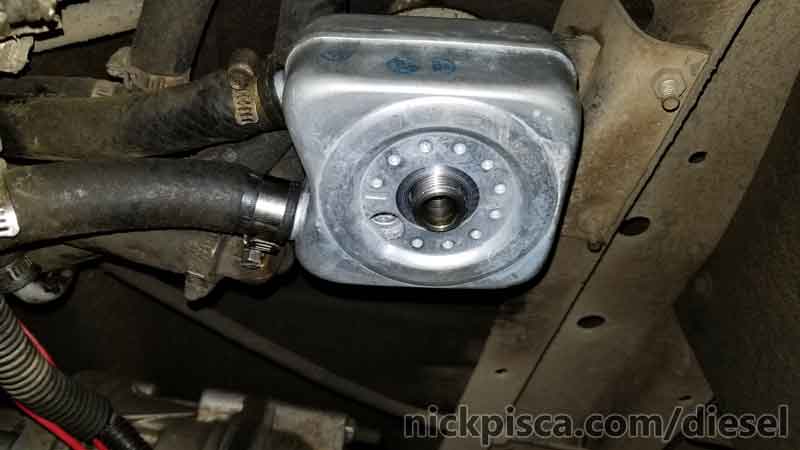
It fits exactly the same, however, the ports a lot smaller and closed off, so I’m concerned this will actually be a further reduction in fuel flow once it’s all installed.

Installing some new heater hose clamps, ensuring there are no leaks, and installing the fuel filter is the last step.

Always remember to pour in as much fuel/oil as you can prior to threading on the filter. This will drastically reduce the amount of air you need to purge out of the lines once the system is air tight.

I got a thumbs up from my assistant. Pretty simple installation. The next thing to do is to purge the air using the Schrader Valve and run the van for a bit to make sure all the air is gone.

Road test results: Good News. This was the source of my limited fuel supply. It flows a lot better now that I’ve replaced the oil-cooler/heat-exchanger at the filter. It’s still odd that this would clog up like it did, but maybe that occurs after several hundreds of thousands of miles. IDK. My Jetta has the exact same setup, and it never had a fuel restriction issue, however, it’s sipping fuel at a much lower rate than the van. On to the next project.

